Travel: From Tangier to Casablanca. Morocco 4/10/2023
- Lili Naveh
- Apr 10, 2023
- 11 min read
Continuation of a trip which started:
4/5 - Seder Pesach in Tangier (part 1)
4/6-9 -Tangier City (part 2 )
4/8 - Tetouan Chefchaouan - (part 3)
At Tangier's Bullet Train Station
Riding south along the coast, for only hour an half, on the newest bullet train which David and I boarded from Tangier, led the 250km distance, through Rabat's latest Grand real estate project - Rabat's Burg Tower
-
The Mohammed VI Tower

Departing Tangier area
Thick fog carpeted the vast hilly cultured agricultural landscape which stretched all the way from Tangier to the first train stop, 50 minutes later, at Kenitra
(Formerly known as Port Lyautey from 1932 to 1956.)
South west along the Atlantic Coast
Second Train Stop: Passing by Rabat's Burg Tower

The 55 story, 250m " a rocket missile " skyscraper , at the high point in the Bouregreg Valley ,(city of Salé,) that borders Rabat, is still under construction,
It will be the second tallest building in Africa.
The Bank of Africa project was launched in 2013, at the new Anfa business district of Rabat. by BMCE - CEO-
the Moroccan businessman Othman Benjelloun who was inspired to build this particular shape following his visit to the NASA space agency, at Cape Canaveral in Florida, USA.
It is designed to be visible from a distance of 50 km all round. with a total area of 102,800 m²,consisting of a tower set on a podium, to resemble a rocket on its launch pad.
In July 2017, its completion was announced for 2023., but not yet delivered., though it was inaugurated .King Mohammed VI in 2018
It will include a luxury hotel, offices, high-end apartments and an observatory located at the top of the tower. The south facade of the tower houses photovoltaic panels
The architects of the tower are Spanish architect Rafael de la Hoz and Moroccan architect Hakim Benjelloun. led by the company O'Tower

The entire almost 400 km (car drive) on this most comfortable and punctual- The Al Boraq- Bullet Train
,all the way to Casablanca ,( I highly recommend), took not more then 2.hours. It connects Casablanca to Tangier and stops at Casa Voyageurs, Rabat Agdal, Kenitra and Tangier stations.
The Al Boraq is the first super-fast bullet train of its kind in Africa, running along the Atlantic coast a 323-km-long between the port of Tangier and the commercial hub of Casablanca. operated by ONCF in Morocco.
It was inaugurated in 2018 by King Mohammed VI of Morocco, following over a decade of planning and construction.
These high-speed trains with double-decker cars and a speed of 320 km per hour (200 mph) have a capacity for 533 passengers.
The amazing Moroccan interior features art deco lamps and spacious seats facing each other that are covered in a rich red fabric. There is a large set of racks to store luggage and a helpful sign tells passengers all the times for both regular and high-speed trains. The seats are accompanied by much roomier tables like in airplane.allowing call for service
From kenitra the flat pastoral landscape became more urbanized a mix of old decrepit housing mixed with newest structures.
The Fast train arrived on time in Casablanca where David and I both got off.
David continued with regular train to Marrakesh , while I headed to the Grand Mosque
Arriving at Casablanca
Joining an Organized Group Tour
I was on my way to Casablanca to join for the next 10 days, a group tour offered by Kishrai Tarbut Tevel (073-374228 ) an Israeli tour operator, which also my friend Madeleine joined, The group flew-in, last night,directly to Marrakesh and was due to arrive by bus, this morning to Casablanca,

In addition to the attractive Morocco's Tour itinerary, the fact that Prof. Uzi Rabi an expert scholar on the Middle East, from Tel-Aviv U ,was one of the 3 joining guides on this group tour, was a large motivating factor, to my joining the trip,.
I also enjoyed Prof. Rabi's guidance, on the trip to Emirates (posted here), in 3/ 2022, together with also Ran Shoham most knowledgeable prolific architect, who surprised us on this trip, and joined unannounced,
In addition the third guide Itסchak Itסchak- is a geologist geographer who also worked for Ayala Geographit Tours.
Udi Ben Zeev - the Tour Operating Company's owner, accompanied the group as well.
I "substituted" my one private Testosterone infused male husband, with-whom I spent over a month, in a pair setting touring in Europe, with 4 other non-related viral males, to guide the group's way in North Africa....
Itschak Itschak Ran Shoham Udi Ben-Zeev
The owe Stricken one The Happy one The Sever one
++++++++++++++++++++
I joined the group, by the mammoth Grand Mosque in town
when it finally arrived at Casablanca at midday.,

Mosque Hassan II
Located at Bd Sidi Mohammed Ben Abdallah

The spectacular building which was commissioned by King Hassan II to be the most ambitious structure ever built in Morocco, is one of the few mosques in morocco to which entrance to those who are non- Muslims is permitted
The stunning reactionary unusual building , is the largest functioning mosque in Africa and is the 7th largest in the world.. The 22 acres complex, which is set between the harbor and the El Hank lighthouse, rises above the Atlantic Ocean.
When it was built starting in 1986 and completed in in 1993, it was the second largest at the time..It stretches partially on land and partially over the ocean,

The building layout is known as the Basilica plan, which is unusual, and at the time was controversial,
It blends Islamic architecture, Moroccan elements, Moorish Andalusian influences and many more other influences.
A maximum of 105,000 worshipers can gather together for prayer: 25,000 inside the the prayer rectangular shape hall, and another 80,000 on the mosque's outside ground.
The building's dimensions are 200 m in length and 100 m in width.
It is the only mosque structure where the worshipers praying is carried by to the length of the building's indoors, which reminds the long axis of a church and not along the customary width of the mosque
The mosque stands on a promontory platform- linking a natural ridge rock outcrop reclaimed from the sea, where the Orthlieb Pool (municipal swimming pool) had previously been located, with 2 large breakwaters also built, to protect the mosque from the erosive action of the ocean waves, which can be up to 10 m height.
A temporary pier 800 m length was erected to protect the foundations of the pillars from the sea during the construction period.
Structural deterioration in the concrete wall was observed 10 years after the mosque's completion, allegedly due to exposure to the salt water requiring effective restoration works which were instituted in 2005

Heavenly Elements of Water and Sky
Looking out to the Atlantic Ocean;, worshipers can pray over the sea, but can not see it, as there is no glass floor looking into the water.

The roof installation is of 300,000 tiles made especially of cast aluminum, imitating the traditional glazed terracotta tile from Fez It is retractable, and can be opened to the sky allowing air for ventilation

The minaret - 60 stories high, is the world's second tallest minaret at 210 m, and is topped by a laser beam, - light from which is directed towards Mecca.
The 3 balls at the roof's top either reference to the 3 monotheistic religions, or to the 3 holy centers in Islam - Masjid al-Haram -Mecca, Al-Masjid an-Nabawi, in Medina and the Al Aqsa Mosque compound, in Jerusalem.
The exterior surfaces of the mosque display titanium, bronze, and granite finishes. ornamented with pale blue marble and Zellige tilework
The green and light blue reference with the sea water's and sky's colors.

Moroccan style building - projecting a tolerant inclusive Islam - with other eclectic artistic elements, both Mameluke and Andalusian architecture, like Andalusian the horseshoe arches,similar to the ons contracted in the Saragossa Aljaferia (which David and I visited in March 27-28)
The pointed at the top arches were an import from Samara Iraq. The 1/4 of an Arch style on top of each other to create a bigger Arch were import from Iran.. The muqarnas design (like cave's stalagmites) embellishing the ceilings.

All of the granite, plaster, marble, wood and other materials used in the construction, were extracted from around Morocco, with the exception of some Italian white granite columns and huge 56 glass chandeliers which are Italian Moreno ones

The Atlas ceder wood carvings, the zellij tile work, the stucco mouldings Agadir marble and Tafraout granite are of elaborate and highly impressive design;
The walls are of hand-crafted marble, Ceramic slidge ,and stunning stone sculptured and wood ornamented work, some Mogul Indian Islamic design, and other Norman Andalusian wood work imported from Sicily. Flour de lice carved symbols of wisdom and prosperity
The dome's wood ceiling is Fez originated.
The main ceiling wood work is Bereber - bershla
The Arabic text on the ornamented Pillars is in old Arabic, Turkish and
Iranian Islam projecting an Islam which is a bridge containing many styles and cultures.
and which makes a public statement conveying to the world an invitation to peaceful business making and cooperation. which the Islamic religious council together with the king worked collaboratively to gain acceptance and was actually approved.

The traditional architectural type of projecting oriel window enclosed with carved wood latticework element, located on the upper floors of the building- the Masharabiya - work follows the one of Al Aqsa Mosque
Unusual is also the elevated wood platform, on both sides of the elongated axis for women worshipers to attend and not mix with the men below.
The first-class sound system is discreetly hidden within the Pillars

The garden around the mosque is a popular location for family picnics.
Other structures of the complex are:
A madrasa (Islamic school) traditionally designed area of 4,840 square including a huge basement 2 stories in height, constructed in a semi-circular shape, with abutting qibla wall and the mihrab section. giving it importance as a religious studies center.

The ablution room and a vast public hammam (bathhouses) are in the basement, with its own entrance. is quite stunning.
A plastering technique which adds egg yolks and black soap into mixed plaster, was used in the hammam baths.
The 41 fountains in the courtyard are all well decorated. projecting abundance

Hassan II Mosque Museum on Moroccan history, conference halls, and a very large library said to be the "most comprehensive in the Islamic world
As to generate income in support of o going maintenance, required to this huge complex several buildings were privatized and rented out to some other organizations and scholarly functions.
The mosque was designed by French architect Michel Pinseau who lived than in Morocco under the guidance of King Hassan II and was constructed by the civil engineering group Bouygues
The construction work involved 35,000 workers and 6000 traditional Moroccan artisans who worked for five years to create the abundant and beautiful mosaics, stone and marble floors and columns, sculpted plaster moldings, and carved and painted wood ceilings.
The Moroccan artists and craftsmen involved in building and beautifying the mosque., were summoned from all over the kingdom, and were specially taught and trained, in mastering the traditional artisan skills which were long forgotten by,then participated in
The wood, ceramic and stone craftsman turned their special trained skills into their
into their artistic profession, off- which they make their honorable living, by supplying the markets with specialized handcrafts and trinkets..
King Hassan II (1929 - 1999) who was the King of Morocco (as of 1961 until his death) requested to submit plans for a mausoleum to honor the the death of the previous
King Mohammed V in 1961. He summoned the best of the country's artisans to come forward and submit plans that should "reflect the fervor and veneration with which the illustrious dead king was regarded.
The building commissioned by King was to be the most ambitious structure ever built in Morocco. In 1980, during his birthday celebrations, Hassan II had made his ambitions very clear for creating a single landmark monument in Casablanca by stating.. that the mosque to be built has to be on the water, because "God's throne is on the water". - where the creator can be praised on firm soil, by the worshipers who can contemplate God's sky and ocean".

Constructions started in 1986 with the evacuation of thousands of poor people residing in the depleted slum near by neighborhoods, that were shaved and erased, for the sake of the mosque.
Work lasted. 7 years and cost an estimated 585 million euro, of tax money and public contributions from twelve million people donating to the cause, including donations from Moroccan Jews, Abraham Fund and also from French Jews.
Not much else was seen in town excluding the beachfront Corniche .
The long landscaped walkway promenade, in the neighborhood of Ain Diab, overlooking the Atlantic ocean, and along which the bus drove to drop the group for dinner at the largest mall in town, before continuing to Rabat, is lined up with beach clubs, cafes, and restaurants,

Casablanca - Dar al-Bayda - "White House";
little bit more on this modern cosmopolitan city


The port city "Casablanca" which the 1942 romantic movie by the same name, starring Humphrey Bogart, Ingrid Bergman, made it famous, is located on the Atlantic coast of the Chaouia plain in the central-western part and is Morocco's main Atlantic seaport.
After Tanger-Med, Morocco's chief port is within the Port of Casablanca being one of the largest artificial ports in the world., and the second largest port in North Africa,
It also hosts the primary naval base for the Royal Moroccan Navy.
With a population of a 3.5 million in the Greater Casablanca, is the largest city in Morocco , making it the most populous city in the Maghreb region, eighth-largest in the Arab world. and the country's' economic Global Financial Center, and business center. with many European and US companies headquarters , as well as it is also the primary industrial zone of the nation.
From the 15th c up to the 1850 the city's name was known and used in maps as as "Anafa". When Sultan Mohammed ben Abdallah (c. 1710–1790) rebuilt the city after its destruction in the earthquake of 1755, it was renamed "ad-Dār al-Bayḍāʾ- White House
Probably founded by the Berbers in the 7th BC It was used as a port by the Phoenicians later the Romans, and after by other set of conquerors.
In the early 15th c, the town became an independent state and emerged as a safe harbor for pirates and privateers, leading to it being targeted by the Portuguese, who bombarded the town to its destruction in 1468. and building a military fortress on its ruins, in 1515. around which the town grew up.
Following the 1755 big earthquake which impacted Portugal and destroyed most of the town , it was finally reconstructed between 1756 and 1790 by Sultan Mohammed ben Abdallah, the grandson of Moulay Ismail and an ally of George Washington, with the help of Spaniards.
The town had a colonial history and French control of Casablanca which was formalized in 1912 when the Treaty of Fes established the French Protectorat., the town also was the site of the US Nouasseur Air Base, the hosted of the Anfa Conference (also called the Casablanca Conference) in January 1943. when Prime Minister Winston Churchill and President Franklin D. Roosevelt discussed the progress of the war. and also during the 1940s and 1950s,
Casablanca was a major center of anti-French riotin., until the 1956 independence of the country. Then students riots against King Hassan II took place in 1965 , 1981 and women riots in 2000.
The Jewish Reference
Casablanca was a major departure point for Jews leaving Morocco through Operation Yachin, an operation conducted by Mossad to secretly migrate Moroccan Jews to Israel between November 1961 and spring 1964.
The mellah - Jewish quarter of Casablanca is young by Moroccan standards, not much more than a century old. While Jews no longer live in the mellah, kosher butchers are found in the old market, next to other butchers selling horse meat.
The Jewish cemetery in the mellah is open. The 2,000 Casablancan Jews live outside the mellah in the European city, where they worship in more than a dozen synagogues, eat in kosher restaurants, entertain themselves in community centers, and attend Jewish schools and social service centers.

Beth El is the largest synagogue and an important community center, seating 500 persons. It was completely refurbished in 1997 and its stained glass windows and other artistic elements are the main attractions (more)
(more on the Casablanca's Jews)
The Synagogue was not visited on this trip.
Dinner at Morocco Mall
Morocco Mall, which was opend in 2011 is located at the end of the Casablanca's Corniche and is now the largest shopping mall on the African Continent .with 590000m² of floor space..

There was not much to report on the dinner's food at the mall, which Madeline and I shared, nor on the irritating slow restaurant's service .or about the usual international brand name stores.....
However the cylinder shape aquarium called "Aquadream" which was designed and built by International Concept Management (ICM). staged in the center of the mall, did capture our attention. The massive 1,000,000 L (220,000 imp gal; 260,000 U.S. gal) aquarium contains over 40 different species of fish,
The bus ride, from Casablanca to Rabat, during the dark hours, after dinner at the mall, took about an hour and a half . Most group members fell asleep immediately. catching up on the deprived sleep, from the previous night, when their arriving direct flight from Israel to Morocco, landed unexpectedly in Casablanca, instead of in Marrakesh due to alarming strong winds, After 2 hours wait at the airport, was aloud to continue to Marrakesh, the original destination in midnight,.
Members only got to bed around 3:00am that night, and yet boarded the bus back to Casablanca early 8:00am in the morning...
The night was spent in Rabat, the first Imperial city due to be explored tomorrow.

To be continued.....

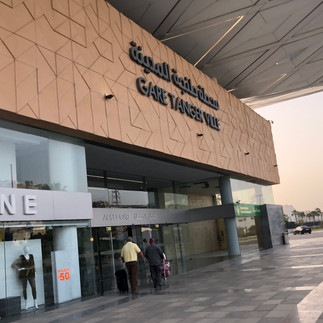
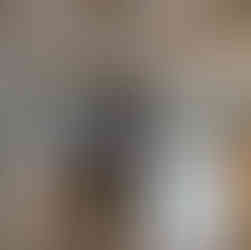





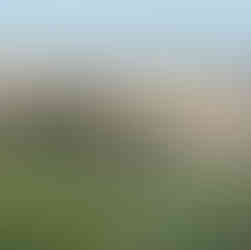

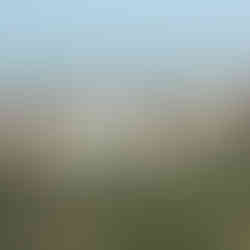




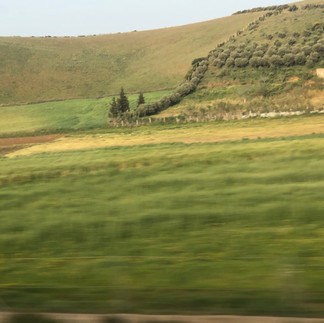





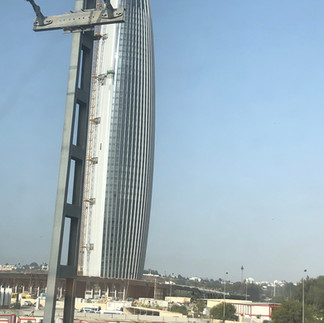


















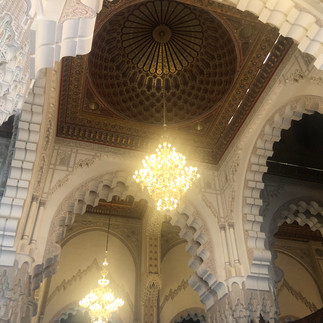




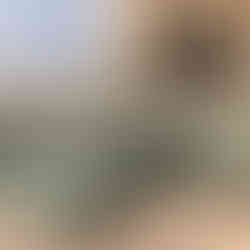







Comments